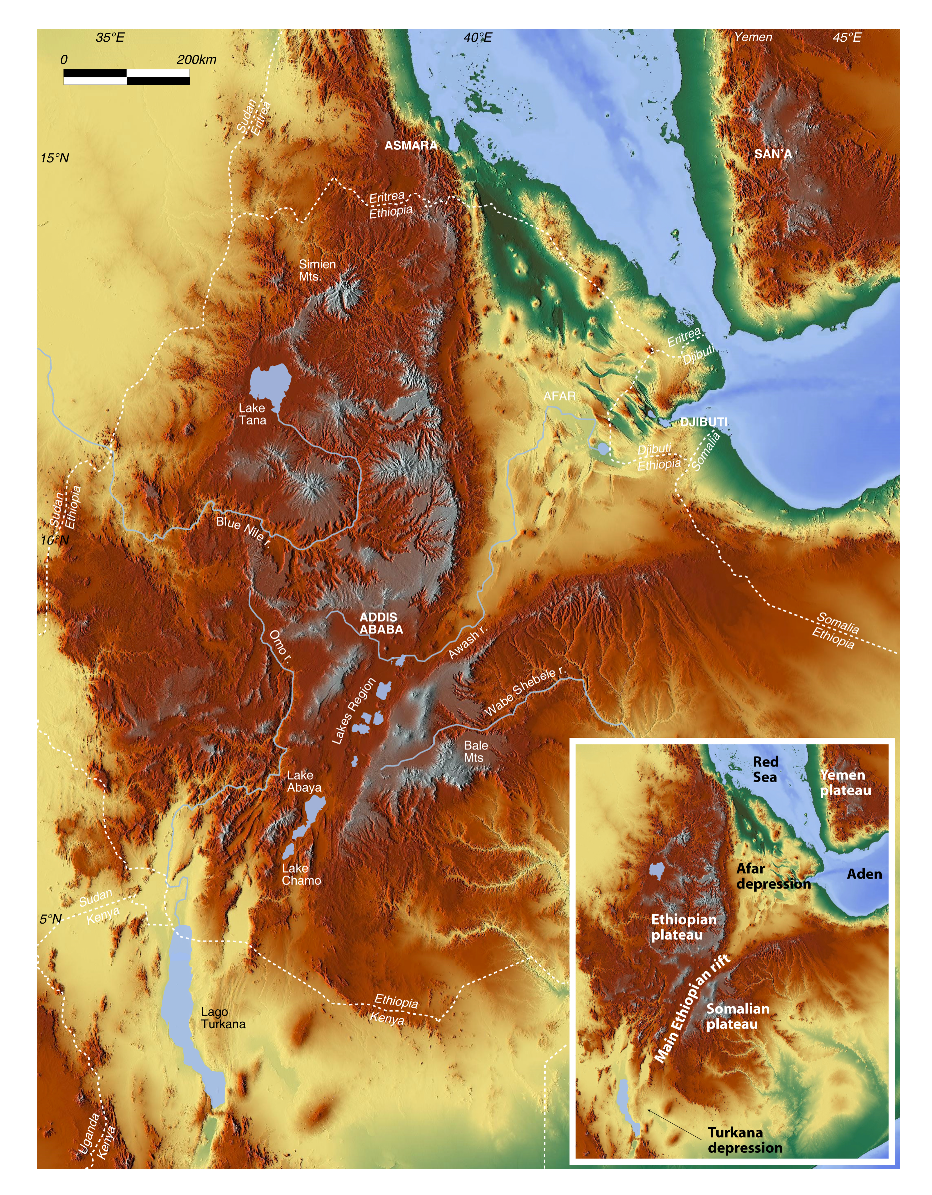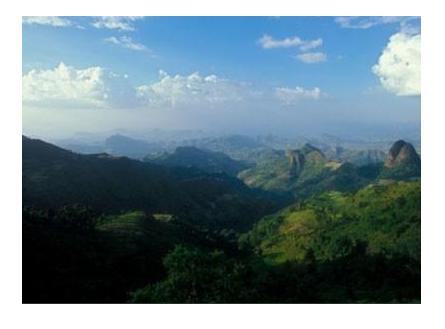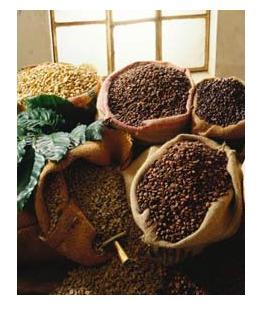November 2013 - Ethiopia and the Origin of Man and Coffee
 |
|
Ethiopia - Birthplace of Man and Coffee?
 James Michener might begin this story hundreds of millions of years ago in the Afar region of Ethiopia. Heat from the asthenosphere, part of the upper region of the Earth’s mantle, is causing a large bulge in the earth’s crust, creating the highlands and mountains of Ethiopia, and also causing a split in the African tectonic plate. The dome still exists and is huge, hundreds of miles across. Its boundaries very roughly follow those of Ethiopia’s, making its border one of the more natural in a continent whose countries were mainly divided up by colonists from Europe.
James Michener might begin this story hundreds of millions of years ago in the Afar region of Ethiopia. Heat from the asthenosphere, part of the upper region of the Earth’s mantle, is causing a large bulge in the earth’s crust, creating the highlands and mountains of Ethiopia, and also causing a split in the African tectonic plate. The dome still exists and is huge, hundreds of miles across. Its boundaries very roughly follow those of Ethiopia’s, making its border one of the more natural in a continent whose countries were mainly divided up by colonists from Europe.The rift, which will eventually split the African plate into two new plates (which geologists have already names the Nubian and Somali plates) has created an amazing valley which stretches from the Red Sea down through Ethiopia, Kenya and into Tanzania. The rift, first known as the Great Rift Valley can be further traced north from where it runs into the Arabian plate and splits northwest up the Red Sea to Syria, and to the east into the Gulf of Aden.
The evolution and geography of the rift have made East Africa especially sensitive to changes in the Earth’s climate. Some speculate that these changes hastened the evolution of the hominids that eventually developed into the coffee drinker of today, Homo sapiens. One current theory posits the evolution of bi-pedalism as an adaptation to the variations in climate and loss of forests. In any event, the Ethiopian Rift is especially rich in hominid fossils including the oldest known fossils of Homo sapiens, and its theoretical predecessors such as Australopithecus afarensis (“Lucy”), Homo habilis and Homo erectus.

In the Ethiopian rain forest, high up on a piece of the Earth's crust that has been pushed up by the slow creeping convection of the earth's mantle, another important organism evolved, Coffea arabica. It took man a long time to find this plant. The oldest Homo sapiens fossils were found at the Omo I site in the Ethiopian Rift Valley and date back approximately 195,000 years, and it took almost that long for us to discover a plant that was growing in our birthplace's back yard. As legend would have it, a descendant of those first Homo sapiens who may have migrated out of the valley and into the mountains, was herding goats, just over 1,000 years ago in the 9th century. The goatherd, named Kaldi, noticed how frisky the goats became as they ate the berries off a particular bush. Trying some himself he felt energized. Other stories claim a Sufi mystic discovered the beans on a trip to Ethiopia in the 12th century. An early scholar claims the first literary mention of coffee was by a Persian physician in the 10th century. But the most definitive evidence of coffee use dates from Sufi monasteries in Yemen in the middle of the 15th century. And if it seems there is an ancient connection between Sufis and coffee, there is. From its discovery coffee has been used by the Sufi orders to remain awake during ritual night-time prayer.
While there are other Coffea species, the arabica, which appears to have developed in the Kaffa region of Ethiopia, is the superior species. At this point we could sketch a history of this delightful berry in the manner of Michael Pollan’s Botany of Desire. We might describe how this plant has evolved alongside man in order to further itself. The story of coffee would show that it has adapted so successfully that the species has spread across the globe (though still sticking to a band of the planet between the Tropics of Cancer and Capricorn).
While we know where coffee comes from, we can only speculate on the origins of human consumption of the bean. We do know that in Ethiopia coffee preparation and consumption dates back to antiquity, and has evolved into ceremony. In the preparation of coffee, which is almost always carried out by a young woman, the beans are roasted, ground, steeped, and poured in a ritual that can last a lot longer than boiling some water and adding some Nescafe. The whole family is included and often a young child will present the first cup to the guest of honor, or more commonly, to the oldest participant.
 Ethiopia is the largest consumer and producer in Africa, and coffee cultivation and processing provide livelihoods to nearly 15 million people. Coffee exports are just under a quarter of Ethiopia’s exports, and are a major crop for many small growers. Ethiopia also grows excellent coffee.
Ethiopia is the largest consumer and producer in Africa, and coffee cultivation and processing provide livelihoods to nearly 15 million people. Coffee exports are just under a quarter of Ethiopia’s exports, and are a major crop for many small growers. Ethiopia also grows excellent coffee.While much of the crop is naturally processed, our coffee, like most coffee from Yirgacheffe, is wet-processed. Wet-processing takes a bit of the earthiness out, highlighting the clean but rich flavors of the coffee. Our Ethiopian Yirgacheffe Fair Trade Organic Coffee has red fruit notes with citrus overtones. Brew a pot of the Yirgacheffe and you will get a rich cup of coffee that will make your morning, or afternoon, as the case may be.
Yoku Moku Cookies
Fresh from Japan we have a new batch of Yoku Moku cookies. Those of you who have tried them know how special these are, and with this batch we have, dare we say it before Thanksgiving, Holiday tins in stock as well. So as you are planning for the Holidays, consider these wonderful butter cookies.



